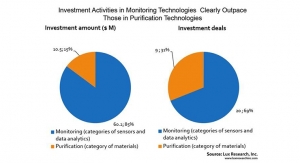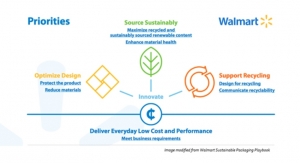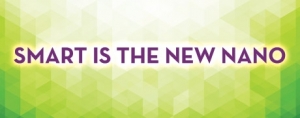10.22.15
Recent advances and ongoing improvements will help rapid and low-cost development of smart materials, and the next wave of innovation will be in self-healing coatings and parts, according to Lux Research.
Smart materials – those that change their properties in response to environmental stimuli, providing dynamic functionality – range from everyday items like photochromic lenses that darken in sunlight to complex ceramics and nanocomposites used in electronics. Emerging classes of smart materials include self-healing materials, sensing materials, and shape memory materials, each of which has many potential applications.
“Today, researchers are beginning to develop software tools for predicting what structures will result in what smart properties. As a result, in the next five to ten years, these kinds of smart materials may become much faster and cheaper to develop,” said Anthony Vicari, Lux Research Analyst and the lead author of the report titled, “Get Smart: Smart Materials as a Design Paradigm.”
Lux Research analysts studied advances in the development of smart materials and their adoption by industry. Among their findings:
Focus is on self-healing materials. With applications in composites and coatings, self-healing materials are set to be the next frontier for smart materials. Such materials automatically repair damage to themselves through one of several chemical mechanisms.
Varied companies hold patents. Over 300,000 patents have been granted across all smart material families even though few mention the term “smart material” in their titles, abstracts or claims. Patent filings peaked in 2012 at about 100,000, and top patent holders include heavyweights such as Siemens, IBM, GE and Samsung.
Commercialization can occur rapidly when conditions are right. Many classes of smart materials had long incubation times, but saw very rapid commercialization once the time was right. Pieozelectric materials were long relegated to niche applications before booming due to adoption in mainstream products such as inkjet printers, digital cameras and smartphones.
The report, titled “Get Smart: Smart Materials as a Design Paradigm,” is part of the Lux Research Advanced Materials Intelligence service.
Smart materials – those that change their properties in response to environmental stimuli, providing dynamic functionality – range from everyday items like photochromic lenses that darken in sunlight to complex ceramics and nanocomposites used in electronics. Emerging classes of smart materials include self-healing materials, sensing materials, and shape memory materials, each of which has many potential applications.
“Today, researchers are beginning to develop software tools for predicting what structures will result in what smart properties. As a result, in the next five to ten years, these kinds of smart materials may become much faster and cheaper to develop,” said Anthony Vicari, Lux Research Analyst and the lead author of the report titled, “Get Smart: Smart Materials as a Design Paradigm.”
Lux Research analysts studied advances in the development of smart materials and their adoption by industry. Among their findings:
Focus is on self-healing materials. With applications in composites and coatings, self-healing materials are set to be the next frontier for smart materials. Such materials automatically repair damage to themselves through one of several chemical mechanisms.
Varied companies hold patents. Over 300,000 patents have been granted across all smart material families even though few mention the term “smart material” in their titles, abstracts or claims. Patent filings peaked in 2012 at about 100,000, and top patent holders include heavyweights such as Siemens, IBM, GE and Samsung.
Commercialization can occur rapidly when conditions are right. Many classes of smart materials had long incubation times, but saw very rapid commercialization once the time was right. Pieozelectric materials were long relegated to niche applications before booming due to adoption in mainstream products such as inkjet printers, digital cameras and smartphones.
The report, titled “Get Smart: Smart Materials as a Design Paradigm,” is part of the Lux Research Advanced Materials Intelligence service.









